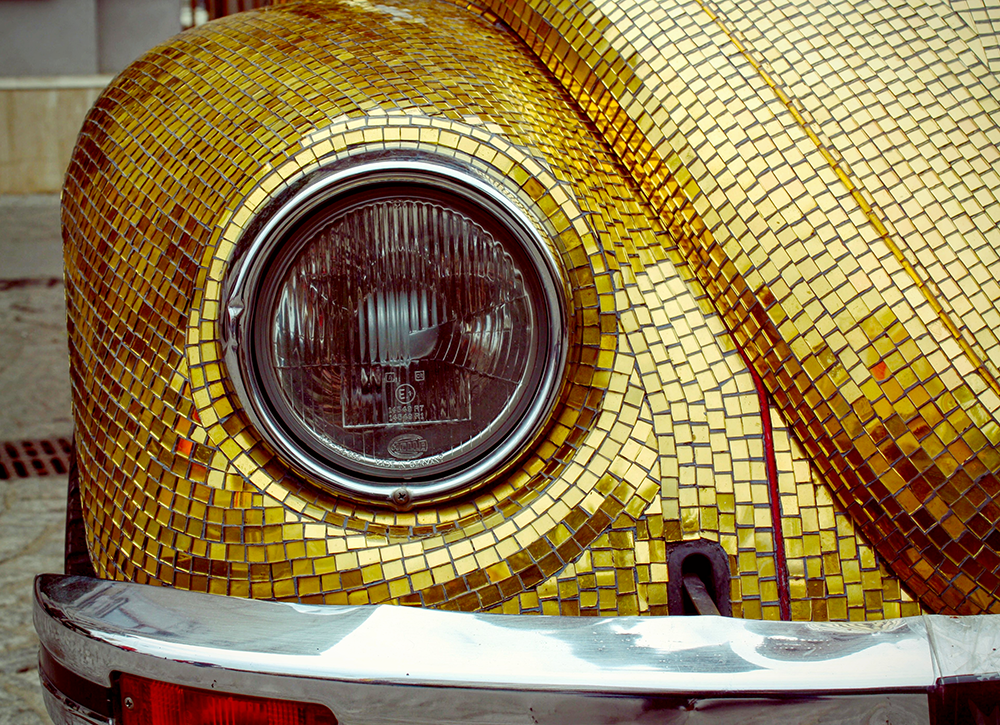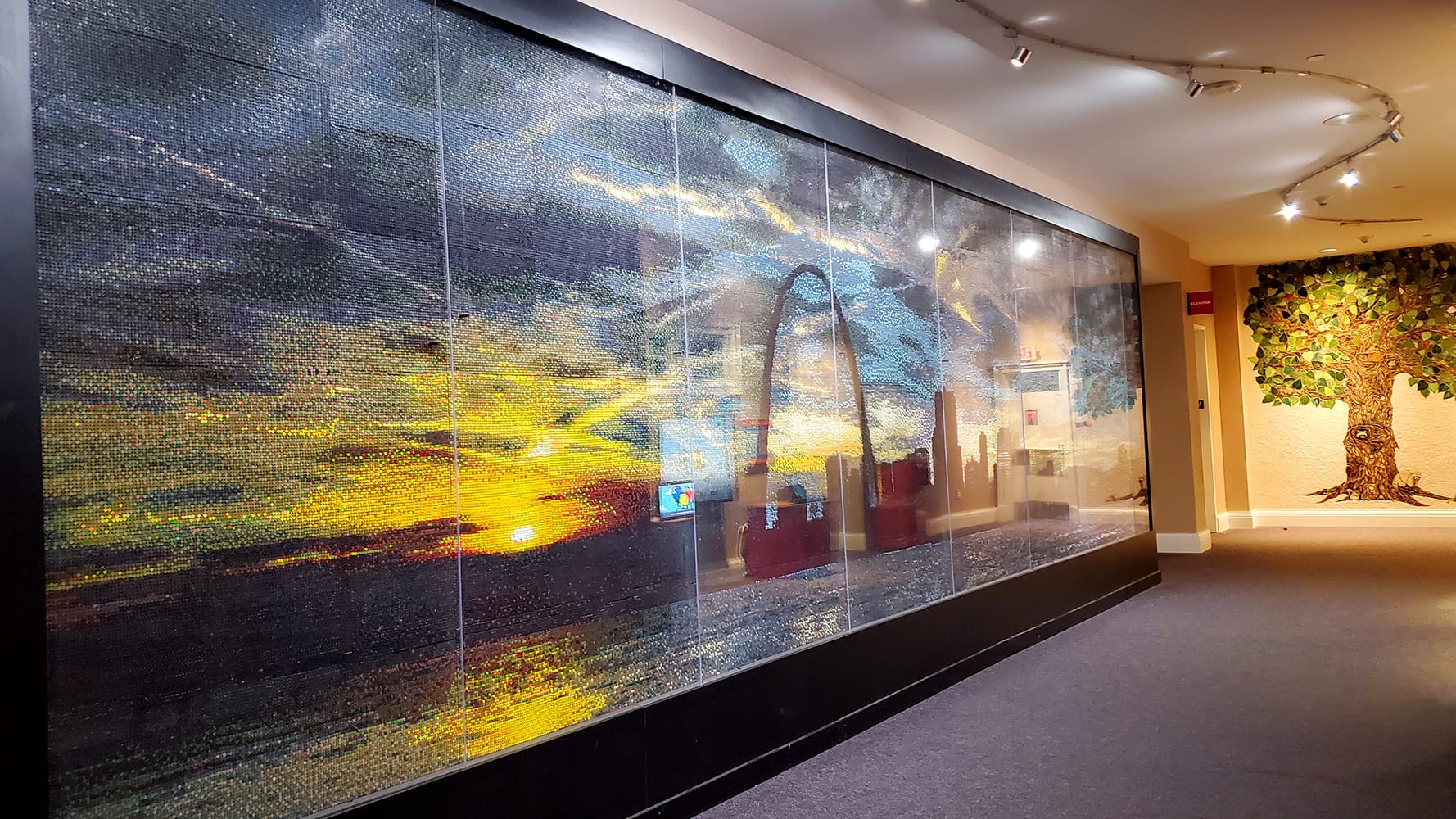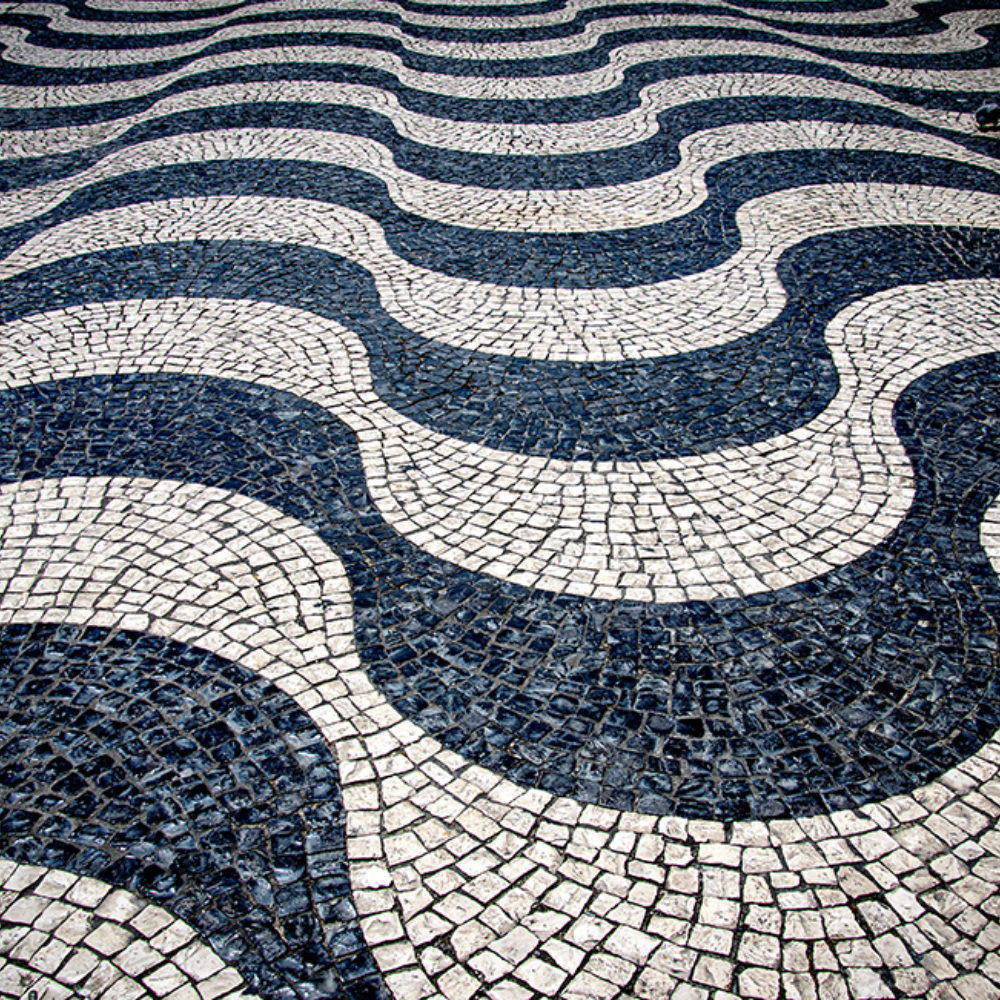Step into the vibrant world of mosaic art, where every tiny piece tells a story.
Mosaics, an enchanting form of artistic expression, are crafted by meticulously assembling small fragments—be it colored stones, glass, or ceramic tiles—into a stunning, unified visual spectacle.
This age-old technique not only captivates with its aesthetic allure but also weaves a rich tapestry of narratives, showcasing intricate patterns and detailed depictions that echo historical and cultural tales.
Let's delve into what makes a mosaic truly a mosaic, exploring its artistry and the historical journey that has shaped this unique craft.
Key Takeaways:
- Definition and Composition: Understand what classifies as a mosaic and the materials typically used in this art form.
- Historical Evolution: Trace the development from early Roman mosaics to the intricate Byzantine and modern mosaics.
- Techniques and Styles: Explore the various techniques used in creating mosaics and how these contribute to the distinctiveness of the art form.

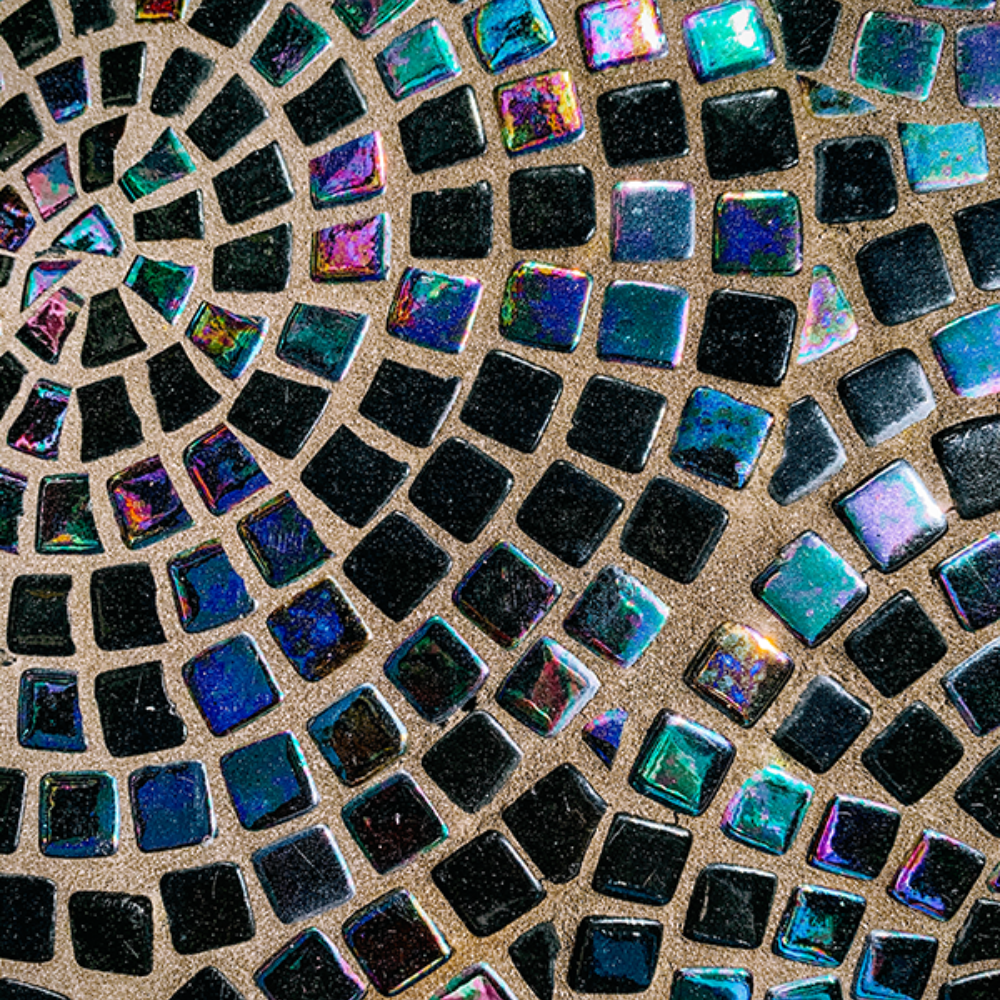
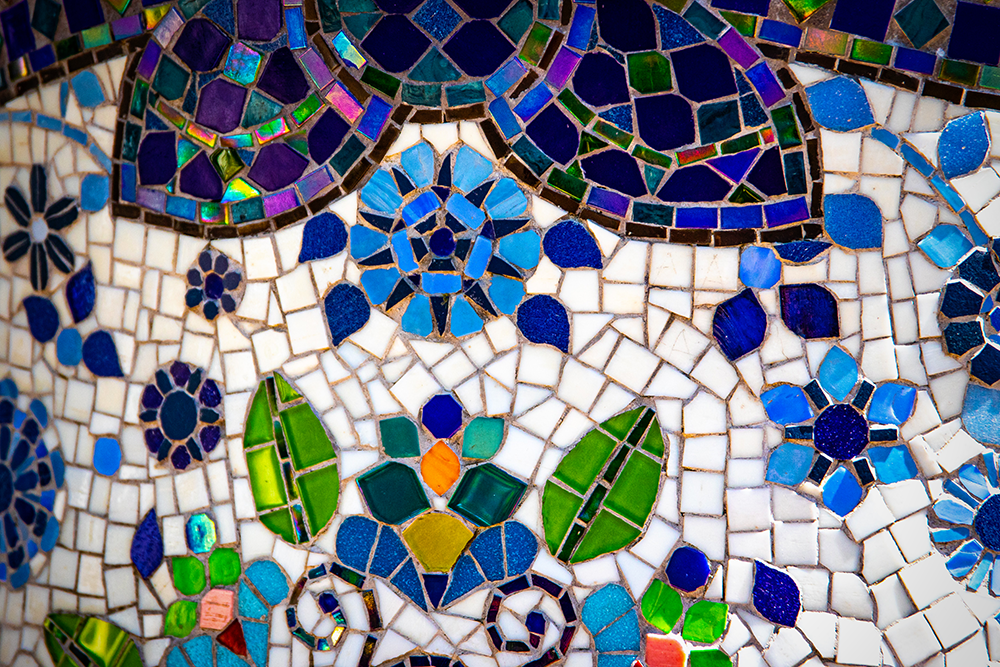
Historical Roots: Ancient to Modern Civilization
The earliest known examples of mosaic art were found in the ancient temples of Mesopotamia and the palatial buildings of the Roman Empire.
These early mosaics primarily served as floor mosaics in Roman villas, displaying complex patterns and scenes from mythology and daily life, showcasing the high artistic quality and the influence of Greek masters.
Materials Used in Mosaics
Traditional mosaics are typically made from small, flat pieces of materials affixed to a hard surface.
These pieces, known as tesserae, can be made of stone, ceramic, glass, or other durable materials.
Roman mosaics often featured stone tesserae, while Byzantine mosaics preferred the shimmer of glass tesserae to create their impressive golden mosaics.
Evolution and Influences of Design
Mosaic artwork evolved significantly over the centuries, influenced by cultural exchanges and artistic innovations.
Byzantine mosaics, for instance, are renowned for their spiritual and iconic representations, often in churches, depicting Christian scenes with a luminosity enhanced by gold tesserae.
Techniques in Mosaic Making
Creating mosaics involves several techniques, with the direct and indirect methods being the most popular.
The direct method involves placing tesserae directly onto the mortar of the final surface, while the indirect method involves preparing the mosaic on a backing paper before transferring it to its destination, often used for intricate designs and large-scale projects.
Roman Mosaics: Emblem of Imperial Grandeur
Roman mosaic art, known for its detailed and realistic depictions, covered the floors of public baths, temples, and homes of the elite.
These mosaics not only depicted mythological scenes and daily activities but also served as indicators of wealth and cultural status within the Roman society.
Integration of Mosaics in Modern Architecture
Modern mosaic art is not confined to galleries and museums; it has seamlessly woven its way into the fabric of contemporary architecture.
Impressive mosaic floors and walls are increasingly becoming focal points in both residential and commercial spaces.
Architects and designers are leveraging the versatility of mosaics, using everything from ceramic tesserae to recycled glass, to create dynamic, engaging environments.
These installations not only serve as aesthetic enhancements but also embody the cultural and historical narratives that mosaics have carried through centuries.
The use of mosaics in modern buildings extends beyond mere decoration.
For instance, the incorporation of beautiful mosaic pavements in urban landscaping projects transforms mundane walkways into vibrant paths that tell stories or mimic nature.
In corporate settings, large mosaic panels can depict brand values or corporate identities, offering a unique blend of artistry and branding.
This functional application in architectural design underscores the enduring relevance of mosaics, making them integral elements that offer both beauty and purpose.

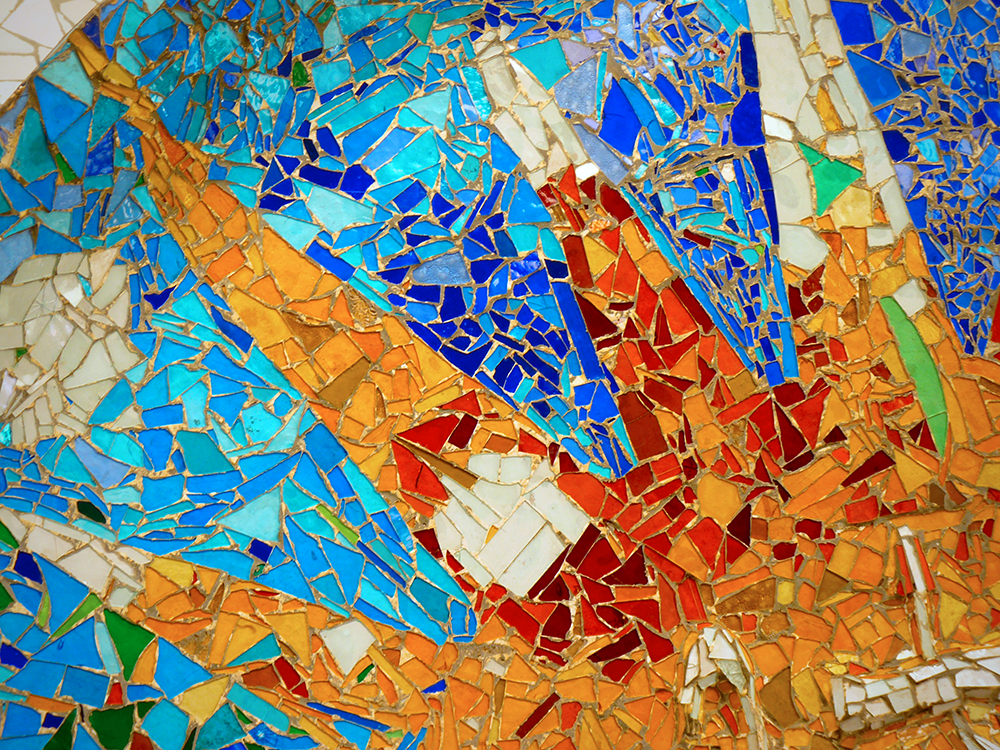

Resurgence of Mosaics in Modern Home Decor
Mosaics have transcended their historical roots to become a vibrant element in modern home decor.
Today, designers and homeowners are embracing mosaics not just as functional elements like beautiful mosaic pavements or floor mosaics but as dynamic forms of personal expression.
Incorporating small stones and different materials, these artworks transform any flat surface into a narrative of colors and textures.
Whether it's a kitchen backsplash or a bathroom floor, the integration of bright colors and intricate patterns provides a unique aesthetic that complements both contemporary and traditional interiors.
Moreover, the application of mosaics in home decor extends beyond mere functionality to evoke a sense of luxury and creativity.
Local artists are increasingly involved in custom mosaic projects, often incorporating motifs from Byzantine manuscripts or elements inspired by the Christian East.
This bespoke approach allows for the creation of spaces that reflect personal tastes and cultural histories, making each mosaic installation a testament to both artistic tradition and individual creativity.
The use of mosaics in home settings not only enhances the visual appeal but also adds a layer of historical richness to the modern living environment.
Mosaics in Garden Art: Nature & Craftsmanship
Garden art has embraced the timeless allure of mosaics, transforming ordinary spaces into visual poetry.
The integration of beautiful mosaic pavements among greenery exemplifies how art and nature can coexist harmoniously.
These outdoor installations often feature natural motifs, such as floral and faunal designs, crafted from stones, tiles, and other materials, reflecting the garden's organic essence.
This synergy not only enhances the aesthetic appeal but also invites a sensory interaction with the space, making every step a discovery of color and story.
Moreover, the use of mosaics in garden art is not just about beauty but also sustainability.
Materials like recycled ceramics and glass are commonly used, promoting an environmentally friendly approach to art.
These mosaic projects serve as a testament to the artist's ability to repurpose materials into something both beautiful and functional.
As visitors wander through these mosaic-laden paths, they tread across a canvas that bridges the gap between art and environmental consciousness, making each visit a step closer to nature.
Mosaics in Modern Urban Landscapes
Mosaics have transcended their traditional roles, emerging as pivotal elements in modern urban design.
Cities around the globe are embedding beautiful mosaic pavements into public spaces, transforming mundane walkways into vibrant tapestries that narrate local lore or celebrate community spirit.
These installations not only enhance the aesthetic appeal of urban areas but also foster a sense of belonging and cultural pride among residents.
For instance, a city might commission a mosaic floor that depicts significant historical events or local flora and fauna, turning a simple path into a compelling journey through time and place.
Moreover, the integration of mosaics into urban landscapes serves as a testament to the enduring influence of ancient art forms on contemporary design.
Modern techniques have allowed for the creation of more durable and intricate mosaics that can withstand the rigors of outdoor environments, from freezing temperatures to the scorching sun.
The use of cutting-edge materials and methods ensures that these new mosaics remain as vivid and captivating as their ancient counterparts, making every street corner a potential gallery of public art.
This fusion of functionality and artistry not only beautifies cities but also elevates the everyday experience of urban dwellers.
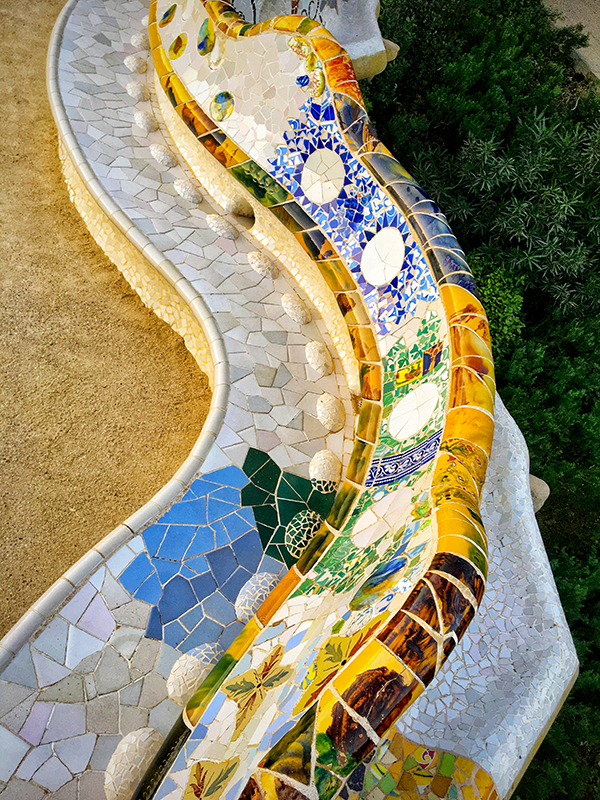
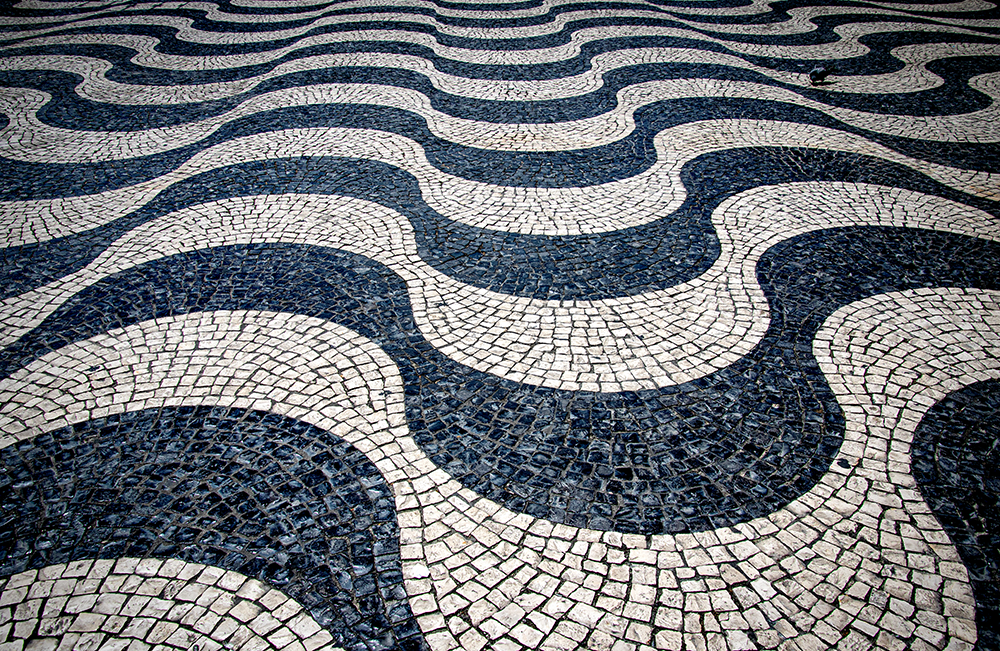
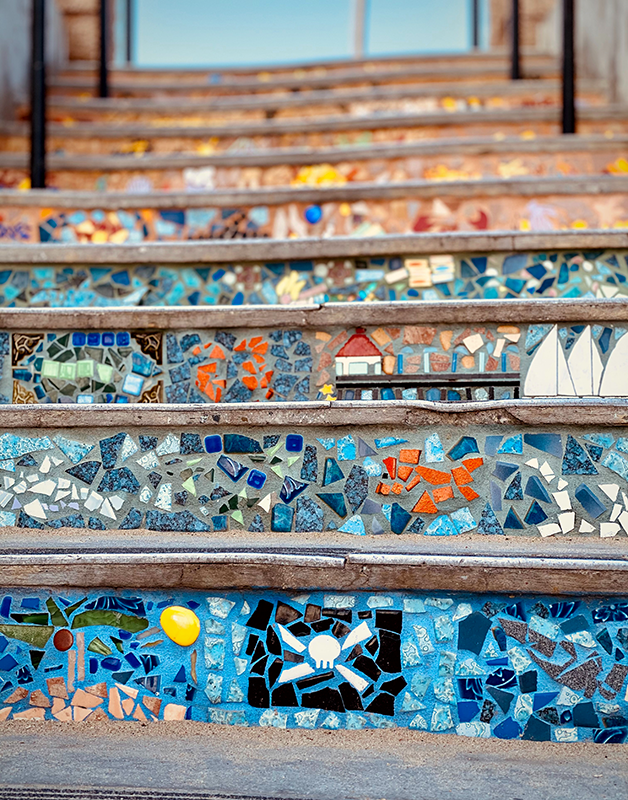
Mosaics in Contemporary Religious Architecture
The integration of mosaics within modern religious structures continues to echo the grandeur of ancient practices, particularly drawing from the awe-inspiring designs seen in St. Peter's Basilica.
These beautiful mosaic pavements serve not only as a form of decoration but also as a narrative medium, telling stories through tesserae that resonate with the faithful.
The intricate designs often feature scenes from Byzantine manuscripts, blending historical religious texts with contemporary artistic techniques, thereby creating a spiritual ambiance that connects congregants with their faith through art.
Furthermore, the influence of Roman and Byzantine aesthetics is evident in the floor mosaics of newly constructed temples and churches.
These spaces often utilize mosaics to demarcate sacred areas or to highlight focal points such as altars or sanctuaries.
The choice of materials and colors reflects a deep respect for tradition coupled with a modern understanding of durability and visual impact.
This fusion of old and new not only enhances the spiritual experience but also ensures that these religious edifices stand as testaments to the enduring power of mosaic art in communal worship spaces.
Mosaics in Contemporary Flooring Trends
Mosaics have transcended time, evolving from ancient art forms to become a staple in contemporary flooring trends.
Today, the beautiful mosaic pavement is not just a functional aspect of flooring but also a significant design element in modern architecture.
Designers and homeowners alike are embracing floor mosaics for their ability to add unique character and vibrancy to a space.
Whether it's a splash of color in a bathroom or a grand entryway adorned with intricate patterns, mosaics offer a bespoke aesthetic that enhances the overall ambiance of any interior.
The influence of Roman and Byzantine artistry is evident in the detailed designs and materials used in contemporary mosaic flooring.
The use of natural stone, glass, and ceramic pieces allows for a wide range of textures and colors, making each installation a unique piece of art.
Notably, places like St. Peter's Basilica continue to inspire the use of elaborate floor mosaics that reflect historical grandeur while providing modern durability and style.
This blend of functionality and artistry ensures that mosaic floors remain a popular choice for those looking to infuse a sense of history and elegance into their living spaces.
Mosaics as Artistic Expressions on Walls
Mosaics are not confined to the floors; they climb the walls to create stunning visual narratives in both public and private spaces.
As an artistic medium, wall decoration through mosaics offers limitless possibilities for creativity and expression.
In contemporary settings, a mosaic on a brick wall can transform a mundane exterior into a vibrant point of interest, or bring a breath of fresh air to interior spaces with subtle, textured designs that complement the room’s aesthetics.
The revival of mosaic art in wall decoration is partly due to its versatility and the profound impact of historical practices, particularly the Roman influence seen in many modern designs.
For instance, the intricate mosaics found in ancient temple buildings and cultural edifices like St. Mark’s Basilica have inspired contemporary artists and designers to incorporate similar grandiose and detailed imagery into modern wall mosaics.
This fusion of old and new elevates the cultural richness of the space, making mosaics a preferred choice for those aiming to blend artistic heritage with contemporary design.
Dynamic Elements in Cultural Institutions
Mosaics have found a renewed role in the embellishment of cultural institutions, where they serve as more than just wall decorations.
In museums, libraries, and cultural centers, mosaics are strategically placed to guide visitors through the history and heritage of the region.
For instance, a mosaic featuring a scene from a Byzantine manuscript might be installed in a library to highlight the historical depth of literary traditions.
These installations capture the essence of cultural identity and heritage, making them powerful educational tools as well as beautiful adornments.
In addition to their educational value, mosaics in these settings often incorporate elements of local craftsmanship, such as brick walls or specific stone types, which link the institution visually and materially to its surroundings.
This approach not only beautifies the space but also fosters a sense of community and belonging.
By transforming ordinary spaces into vibrant showcases of history and art, mosaics help cultural institutions achieve a dynamic interaction between the visitor and the environment, making each visit a discovery of color, story, and identity.
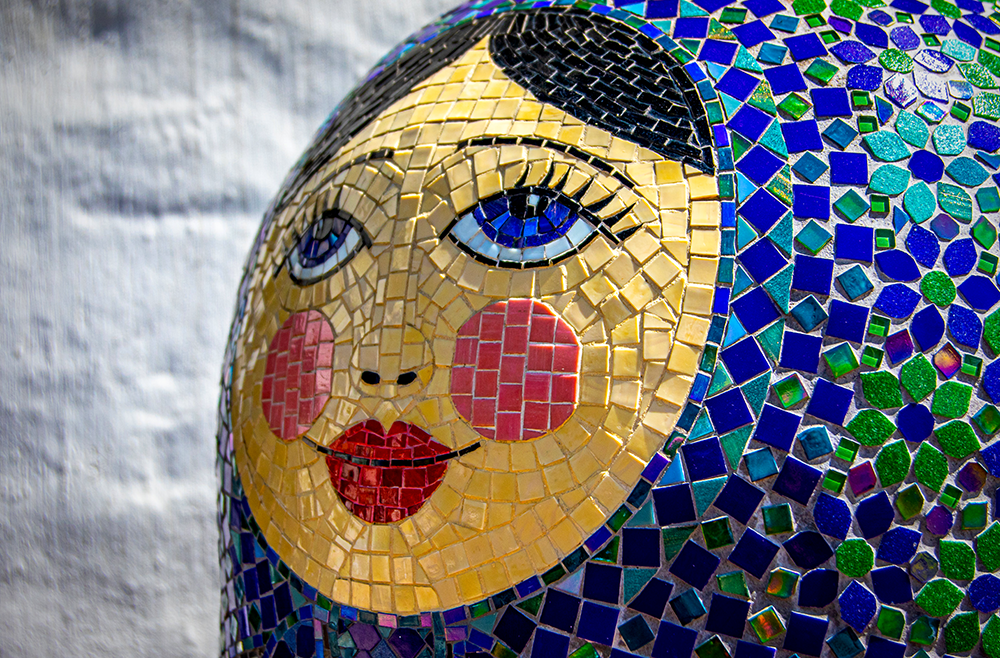

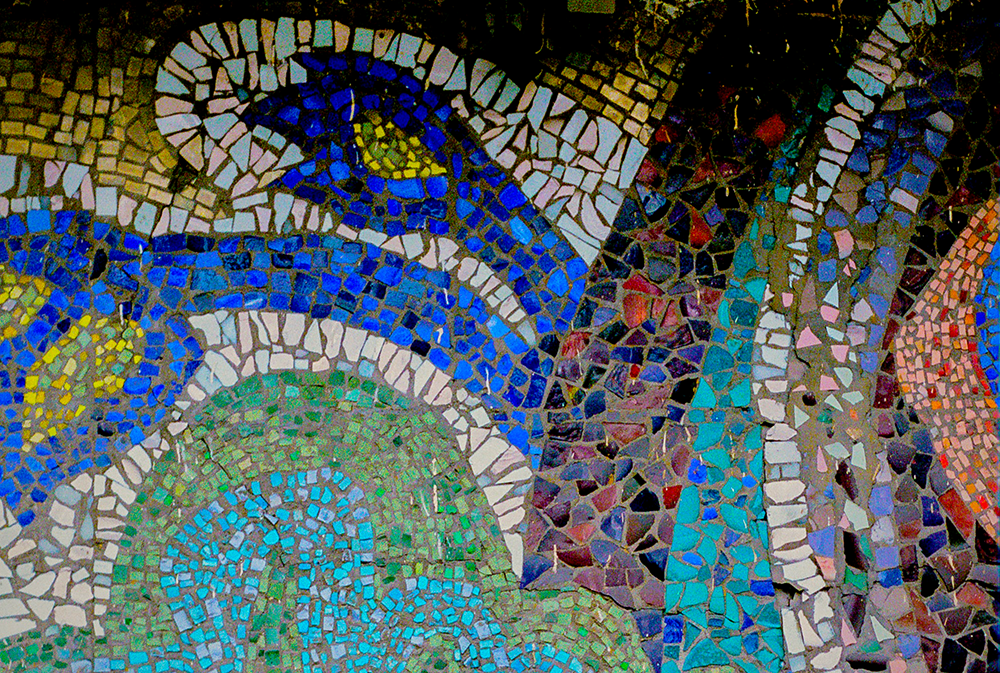
Revival of Mosaics in Institutional Architecture
Institutional buildings are increasingly harnessing the timeless allure of mosaics to create environments that reflect both heritage and innovation.
Universities, libraries, and other institutions are incorporating mosaic art into their structures, using wall decorations and floor mosaics to enrich their aesthetic and historical narrative.
For example, a university might feature a mosaic project in its main hall that illustrates the institution's founding principles or notable achievements, thereby weaving the legacy of the past with the vision of the future.
This resurgence is particularly notable in religious architecture, where mosaics offer a profound medium for storytelling and spiritual reflection.
The intricate mosaic depictions of female saints and biblical scenes in places like St. Peter's Basilica serve as both decoration and catechism.
Similarly, modern temples and churches often employ mosaics to depict the oldest scenes from their religious texts, thereby linking contemporary worship spaces with ancient traditions.
This strategic use of mosaics not only beautifies these sacred spaces but also deepens the spiritual experience for visitors and worshippers alike, bridging centuries through the art of mosaic.
Influence of Byzantine and Roman Styles
The echoes of Byzantine and Roman artistry are vividly present in contemporary mosaic works.
Modern mosaics often draw inspiration from the intricate patterns and religious themes found in Byzantine manuscripts and the grand floor mosaics of ancient Roman villas.
This blending of eastern artistic influences with classical styles results in creations that are both rich in history and aesthetic appeal.
For instance, the depiction of Christian mosaics in modern designs often incorporates traditional icons and symbols used during the high middle ages, adapted to suit contemporary tastes and spiritual narratives.
Additionally, the technical methodologies inherited from these ancient civilizations, such as the indirect method of laying mosaic tiles, continue to influence modern mosaicists.
This technique allows for more detailed and complex designs, which are then transferred to their final destinations, be it a public square or the interior of a new church, like St. Peter's Basilica.
Such practices not only preserve the historical essence of mosaic art but also ensure its relevance and adaptability in today's architectural and decorative projects, bridging millennia through the beauty of tesserae.
Mosaics as a Reflection of Cultural Identity
In regions steeped in history, such as the Middle East and the eastern provinces of the Roman Empire, mosaics serve as a powerful reflection of cultural identity.
In places like San Cipriano Church, where the whole interior may be adorned with figural wall mosaics depicting scenes from the lives of two patron saints or other important Venetian mosaics, the art form connects current residents with their historical and spiritual lineage.
These mosaics are not just wall decorations; they are a narrative woven into the fabric of daily life, telling tales of faith, tradition, and community values through vibrant imagery and symbolism.
Furthermore, the technique of creating mosaics, which often involves assembling countless small pieces to form a complete, harmonious picture, can be seen as a metaphor for societal unity.
In many cultures, particularly those in the Christian East and regions influenced by Byzantine art, mosaics in public and sacred spaces foster a sense of belonging and cultural pride.
They encapsulate local traditions and histories, while also embracing new influences and techniques, thus continuing to evolve as a central form of artistic expression that resonates with both the past and the present of the community.
Mosaics in Religious and Cultural Edifices
Throughout history, mosaics have played a pivotal role in decorating religious and cultural edifices, a tradition that continues to thrive today.
In places of worship, such as the famed St. Peter's Basilica, impressive golden mosaic artworks capture biblical tales and the lives of saints, contributing to the spiritual ambiance.
These figural mosaics not only adorn the interior but also serve as catechetical tools, educating the faithful about the tenets and history of their faith through visual storytelling.
Similarly, cultural institutions like museums employ mosaic art to enhance the visitor experience.
For example, mosaic panels depicting scenes from ancient civilizations or famous mosaics from the Byzantine era can enrich the narrative of historical exhibitions.
This not only helps in preserving the art form but also in educating the public about the diverse applications and significance of mosaics throughout history.
The strategic use of mosaics in these settings highlights their dual function as both decorative and educational tools, bridging past and present artistic endeavors.

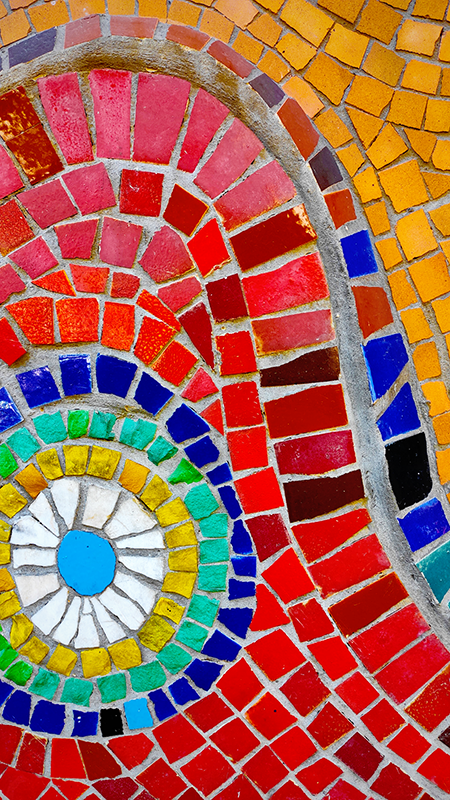
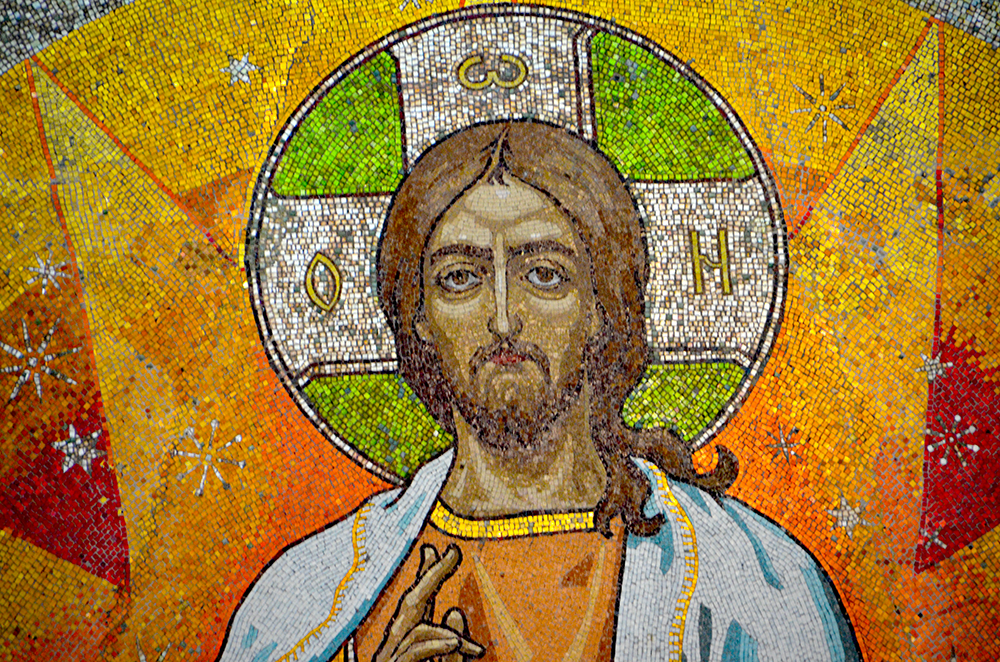
Byzantine Mosaics: Narratives in Gold
Moving east, the Byzantine Empire refined mosaic-making, especially in religious contexts.
The Hagia Sophia, with its expansive golden mosaics, illustrates this mastery.
Byzantine mosaics often featured Christian motifs and were marked by a significant use of gold tesserae, which illuminated the interiors with divine light.
Modern Mosaics: Continuity and Innovation
In contemporary settings, modern mosaics continue to thrive, incorporating both traditional and innovative materials like stained glass and recycled ceramics.
Artists like Antoni Gaudí and Invader transform public spaces into vibrant, thought-provoking environments, proving that mosaic art is as relevant today as it was in ancient times.
Mosaics in Public and Sacred Spaces
Mosaics hold a special place in both public and sacred spaces.
In religious settings, they narrate stories and convey spiritual teachings, as seen in the grand domes of churches across the world.
In public arenas, they beautify spaces and often celebrate local heritage and community stories.
Preservation and Restoration of Mosaics
Preserving mosaics is a critical aspect of conserving cultural heritage.
Techniques involve meticulous documentation, cleaning, and sometimes, re-laying loose tesserae to ensure that these historical artworks endure for future generations to appreciate.
Mosaics as Educational Tools
Beyond their aesthetic value, mosaics serve as educational tools, offering insights into the historical, cultural, and technological contexts of the era they represent.
They are pivotal in understanding the artistic and communal values of past civilizations.
Mosaics in Contemporary Art and Education
Today, mosaics are not only appreciated as part of historical legacies but are also embraced in educational curriculums to teach art and history.
Workshops and community projects often choose mosaics to foster teamwork and creativity among participants, bridging art with social engagement.
Discover the Timeless Allure of Mosaic Art
Mosaics mesmerize with their intricate beauty and historical depth.
It's clear that these stunning works are more than just decorative pieces; they are a profound testament to the enduring human spirit to create and communicate through art.
Each piece of tile in a mosaic tells a part of a story, a slice of history, and a spark of the artisan's soul.
Understanding what makes a mosaic a mosaic helps appreciate its role in cultural expression and preservation.
From the ancient Roman villas to the Byzantine churches, mosaics encapsulate a unique blend of art, history, and craftsmanship.
Whether it graces the floors of ancient ruins or the vibrant walls of a modern city, mosaic art continues to captivate and inspire, bridging past and present through its timeless beauty and intricate craftsmanship.
Embrace the world of mosaics, and let each piece take you on a journey through time and imagination.
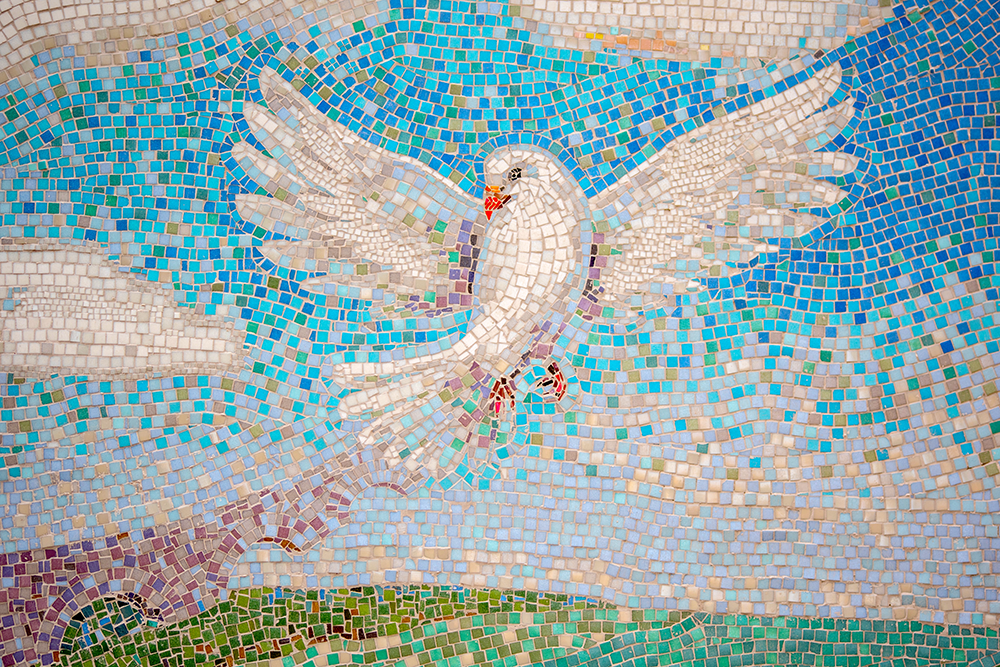
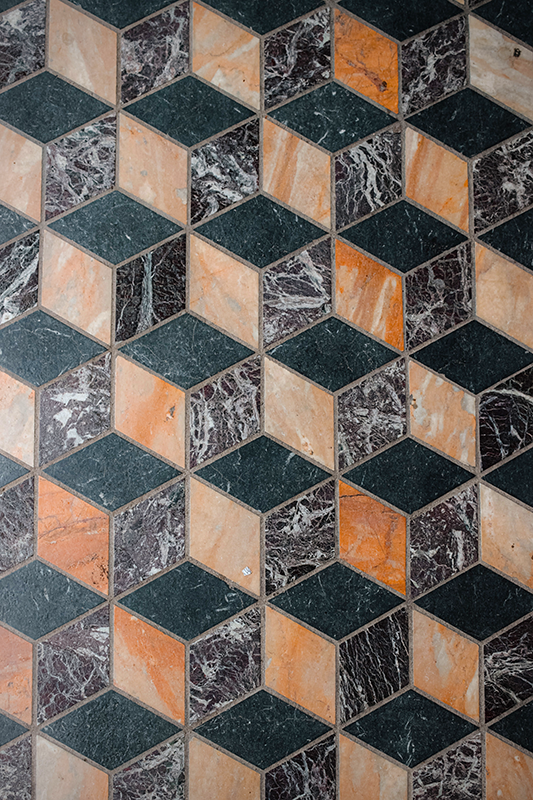
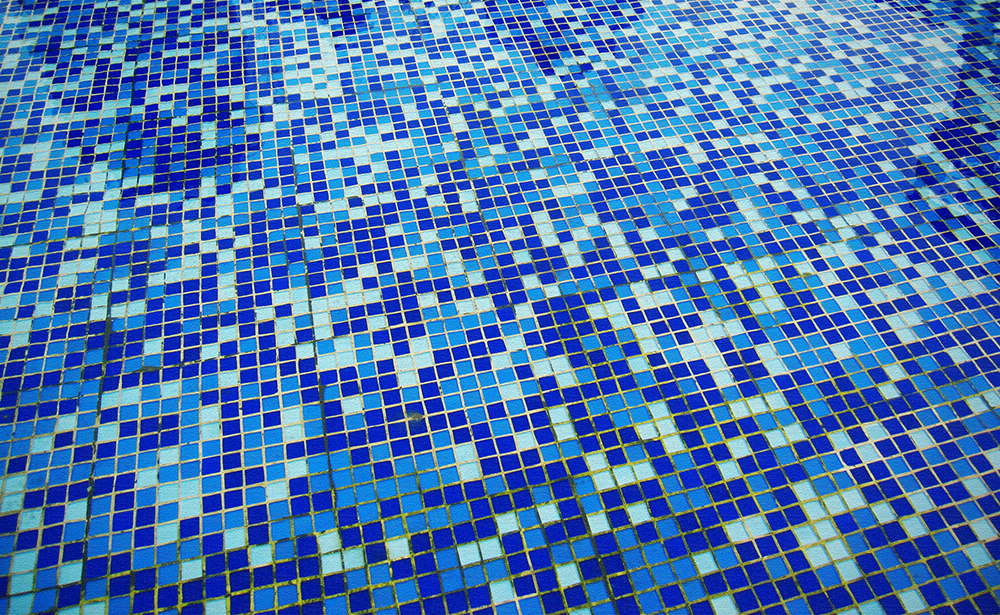
Mosaic FAQs
Dive into the intricate world of mosaics!
Whether you're a budding artist, a history enthusiast, or simply curious about this captivating art form, these FAQs are designed to enlighten and inspire.
From the traditional materials used to the evolution and cultural significance of mosaics, we've got all your questions covered.
Let's explore the colorful and textured journey of mosaic art through the ages and discover how these tiny pieces come together to tell grand stories.
What are the most common materials used in making mosaics?
Mosaics are commonly made from small pieces of colored stones, ceramic tiles, glass tesserae, and other durable materials.
How have mosaics evolved from ancient times to the modern era?
Mosaics have evolved from simple stone patterns in ancient times to complex, colorful artworks in the Byzantine era, and now to innovative uses in modern art, incorporating a variety of new materials and techniques.
What is the significance of mosaics in historical and cultural contexts?
Mosaics provide valuable insights into the cultural, religious, and social aspects of the societies that created them, reflecting both artistic trends and historical events of the time.
What techniques are used in creating mosaics?
Creating mosaics involves several techniques, the most common being the direct method, where pieces are placed directly onto the mounting surface, and the indirect method, where pieces are temporarily set face-down on a backing paper before being transferred to their final surface. Another technique, the double indirect method, allows for more precise placement and is often used for large-scale projects.
Can mosaics be used for both indoor and outdoor projects?
Yes, mosaics are incredibly versatile and can be used in both indoor and outdoor settings. Outdoor mosaics often use materials like stone, pebbles, and porcelain that can withstand weather conditions, while indoor mosaics might incorporate more delicate materials like glass or handmade tiles.
How do I choose the right materials for my mosaic project?
Choosing the right materials depends on the project's location (indoor or outdoor), the desired aesthetic, and durability needs. For outdoor mosaics, weather-resistant materials like stone or rugged ceramics are ideal, whereas indoor mosaics can include a variety of glass, ceramics, and even mirror pieces for a more decorative effect.
What are some famous historical mosaics that I can visit?
Famous historical mosaics that are worth visiting include the Ravenna Mosaics in Italy, known for their stunning Byzantine artistry; the Great Palace Mosaic Museum in Istanbul, which showcases mosaics from the Byzantine period; and the Madaba Map, a mosaic floor in Jordan that depicts an ancient map of the Holy Land.
How do I maintain and preserve mosaic artworks?
Maintaining mosaic artworks involves regular cleaning with non-abrasive materials to prevent scratching the surface. For outdoor mosaics, it's important to check for and repair any cracks or damage caused by weather conditions to prevent moisture from seeping in and weakening the structure.
Are there any modern innovations in mosaic art?
Modern mosaic art has seen innovations such as the use of digital technology to create mosaic patterns and the incorporation of unconventional materials like recycled plastics or electronic waste. Artists today are pushing the boundaries of traditional mosaic techniques to reflect contemporary themes and messages.
What educational resources are available for aspiring mosaic artists?
Aspiring mosaic artists can benefit from a variety of resources including online tutorials, workshops, and books that cover mosaic techniques and design principles. Additionally, many community colleges and art schools offer classes in mosaic art, providing hands-on experience and professional guidance.

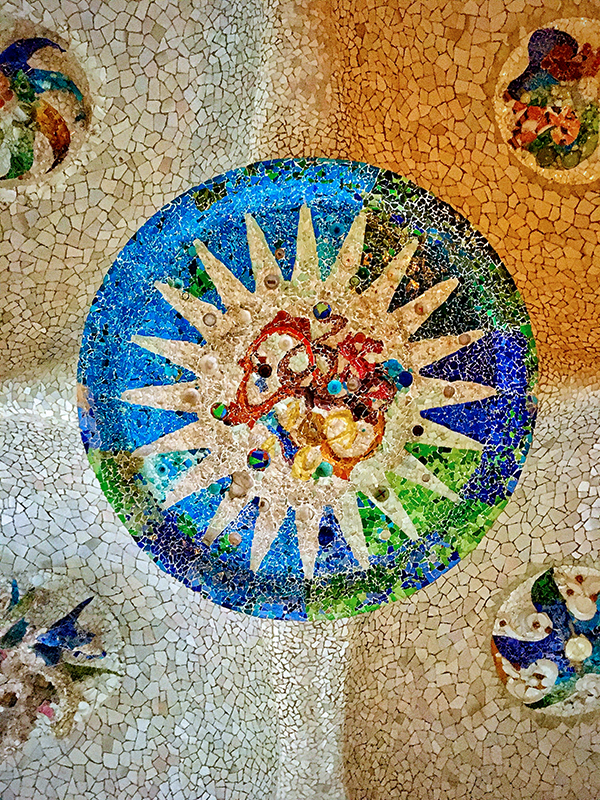
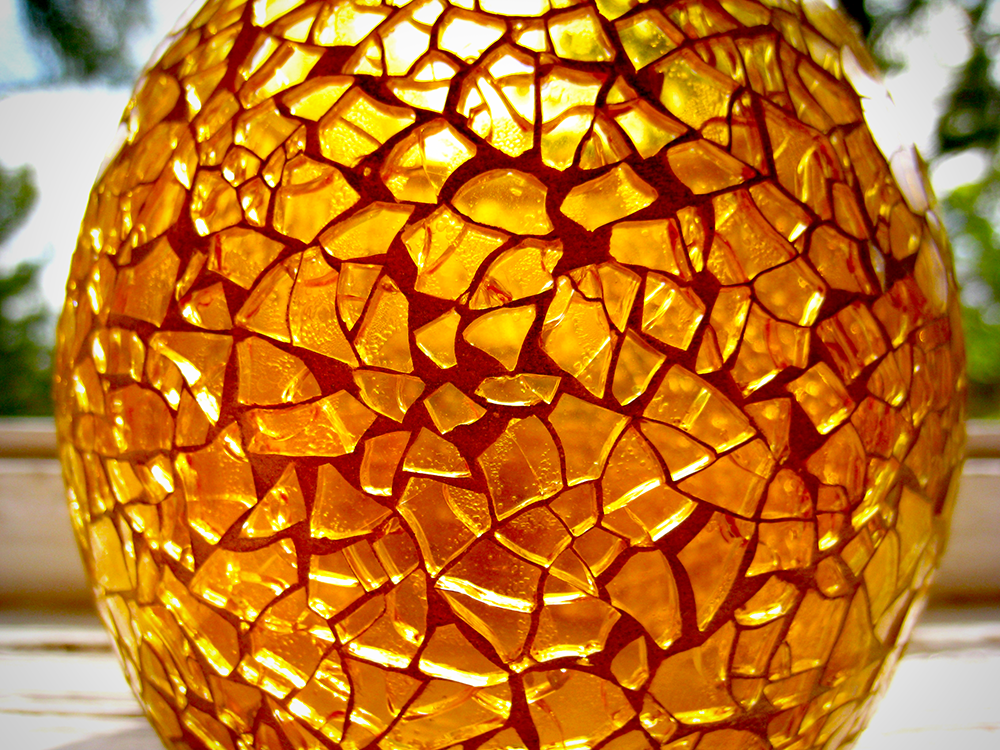
Looking to start creating your own mosaics? Check out The O'Neil Sisters' video!
Want even more content about creativity and art?
Be sure to check out all of our creative chronicles!
Interested in exploring the world of mosaics?
Check out some of our other articles:
-Is a mosaic a form of painting?
-What are the 3 main types of mosaics?
-What are the elements of mosaic art?
